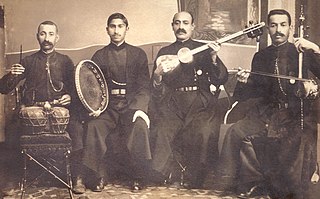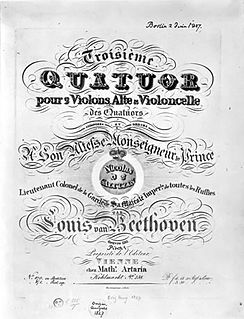 W
WThe Voyager Golden Record contains 116 images and a variety of sounds. The items for the record, which is carried on both the Voyager 1 and Voyager 2 spacecraft, were selected for NASA by a committee chaired by Carl Sagan of Cornell University. Included are natural sounds, musical selections from different cultures and eras, spoken greetings in 59 languages, human sounds like footsteps and laughter, and printed messages from President Jimmy Carter and U.N. Secretary-General Kurt Waldheim.
 W
WThe Brandenburg Concertos by Johann Sebastian Bach (BWV 1046–1051, are a collection of six instrumental works presented by Bach to Christian Ludwig, Margrave of Brandenburg-Schwedt, in 1721. The original French title, Six Concerts à plusieurs instruments names six concertos for several instruments. Some of them feature several solo instruments in combination. They are widely regarded as some of the best orchestral compositions of the Baroque era.
 W
W"Dark Was the Night, Cold Was the Ground" is a gospel blues song written and performed by American musician Blind Willie Johnson and recorded in 1927. The song is primarily an instrumental featuring Johnson's self-taught bottleneck slide guitar and picking style accompanied by his vocalizations of humming and moaning. It has the distinction of being one of 27 samples of music included on the Voyager Golden Record, launched into space in 1977 to represent the diversity of life on Earth. The song has been highly praised and covered by numerous musicians and is featured on the soundtracks of several films.
 W
W"Johnny B. Goode" is a 1958 rock-and-roll song written and first recorded by Chuck Berry. Released as a single, it peaked at number two on Billboard magazine's Hot R&B Sides chart and number eight on its Hot 100 chart.
 W
WMugham is one of the many folk musical compositions from Azerbaijan, contrasting with tasnif and ashik.
 W
W"Der Hölle Rache kocht in meinem Herzen", commonly abbreviated "Der Hölle Rache", is an aria sung by the Queen of the Night, a coloratura soprano part, in the second act of Mozart's opera The Magic Flute. It depicts a fit of vengeful rage in which the Queen of the Night places a knife into the hand of her daughter Pamina and exhorts her to assassinate Sarastro, the Queen's rival, else she will disown and curse Pamina.
 W
WSongs of the Humpback Whale is a 1970 album produced by bio-acoustician Roger Payne. It publicly demonstrated for the first time the elaborate whale vocalizations of humpback whales, and became the bestselling environmental album in history, selling over 100,000 copies. By raising awareness of the intelligence and culture of whales the album helped spawn a worldwide ”Save The Whales” movement, leading to the 1972 United Nations Conference on the Human Environment ten-year global moratorium on commercial whaling.
 W
WThe String Quartet No. 13 in B♭ major, Op. 130, by Ludwig van Beethoven was completed in November 1826. The number traditionally assigned to it is based on the order of its publication; it is actually Beethoven's 14th quartet in order of composition. It was premiered in March 1826 by the Schuppanzigh Quartet and dedicated to Nikolai Galitzin on its publication in 1827.
 W
WThe Symphony No. 5 in C minor of Ludwig van Beethoven, Op. 67, was written between 1804 and 1808. It is one of the best-known compositions in classical music and one of the most frequently played symphonies, and it is widely considered one of the cornerstones of western music. First performed in Vienna's Theater an der Wien in 1808, the work achieved its prodigious reputation soon afterward. E. T. A. Hoffmann described the symphony as "one of the most important works of the time". As is typical of symphonies during the transition between the Classical and Romantic eras, Beethoven's Fifth Symphony is in four movements.